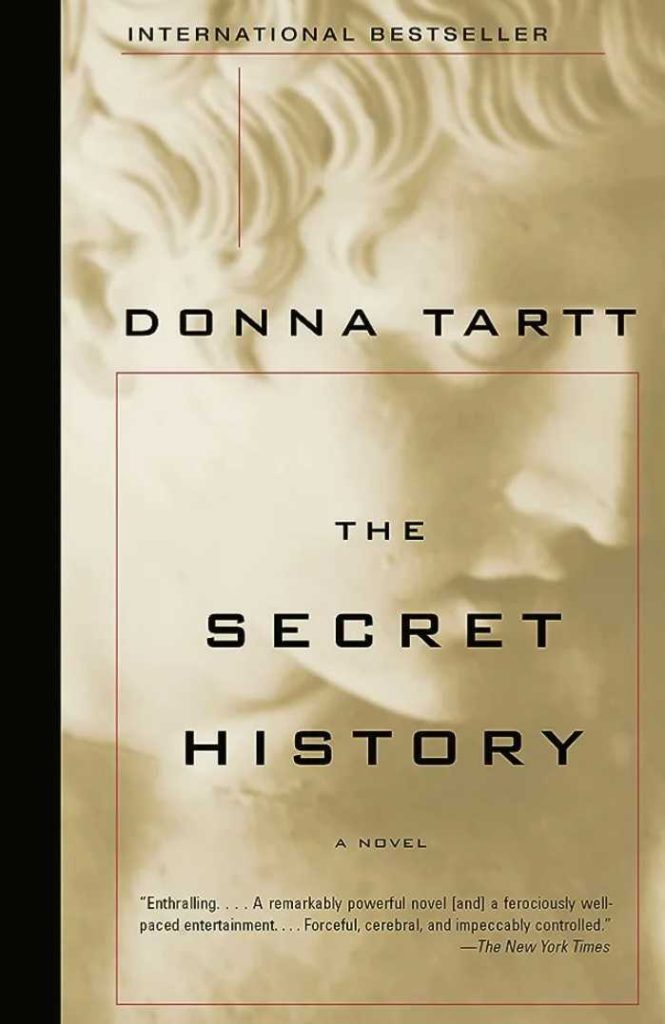The world is like a great abyss, filled with endless opportunities and emotions; because we live in such a precarious, disquieted globe, the disquiet we are surrounded by fails to hush the tumult in our minds and hearts.
Love and obsession are argued to be two different catalysts and motives. But are they really, when both drive a person to do anything, absolutely anything, to live the reality that once only lived in a dream? An interesting question regarding reality is, do people make their reality or live in their heads, hoping it is the truth?
Obsession and reality are questioned in Donna Tartt’s novel, The Secret History. The novel is told through the eyes of Richard Papen, a curious college student who joins a peculiar group of college students: Camilla, Charles, Francis, Edmund, and Henry. This clash of characters forms when Richard joins a Greek class taught by Julian Morrow, a mysterious and authoritative professor; Julian subconsciously influences his students to question the world they live in, replacing modern ideologies with that of the Ancient Greeks.
Exploiting the passion his students have for the life and philosophy of the Ancient Greeks, Julian encourages his students to live by such philosophy — to escape the burden of monotony and live in the intoxication of chaos and adrenaline — causing the group to develop a particular obsession with the Dionysiac frenzy rituals. With the help of various intoxicants, these rituals allow devoted individuals to transcend.
Richard’s fascination with his newfound friends and professor causes him to fall under the influence of their questionable morals. At the start of their friendship, everyone, excluding Henry was adamant about enlightening Richard on the rituals. This caused Richard to be (at times) left out of the group without any reason as to why he was being left out, occasionally finding a bed sheet covered in dirt or a leaf concoction in a boiling pot. Taking the initiative, Henry reveals the group’s “practices,” introducing the idea of chaos and mania to Richard.
Henry, being the unspoken leader of the group, hosts these rituals in the desperate hope that his life has more meaning and purpose than what the mundaneness of reality can give him. The group’s shared passion for losing control of themselves is the core that keeps them so close together. While the need to lose themselves keeps them together, it becomes the reason for their tragic fallout. Edmund, notoriously known as Bunny, begins separating, even fearing, his friends after truly understanding the intensity of the rituals. The twist of the plot puts a great twist on the group — it makes its grand entrance when Henry tells Richard how he murdered an innocent farmer while he was in a state of high during the ritual.
The news of the murder spreads — no one knowing Henry was the murderer — striking the group with intense paranoia. Bunny knows Henry is the killer and begins blackmailing him and the rest of the group. Reaching the peak of their paranoia, Henry, Charles, Camilla, Francis, and Richard develop a plan to kill Bunny; this plan, though immoral and divides the group even more, is successful. Vermont blows up at the news of Bunny’s death, believing Bunny drunkenly fell off a cliff; with the presence of the FBI, the rest of the group is put under immense pressure. Each character fights each other as well as themselves, leading to a tragic separation and with Bunny in the grave.
The intoxication of chaos, though once beautiful, showed its terrorizing realness. Professor Julian Morrow was correct in teaching his students that beauty is terror, for we bow down to what we perceive is glorious.
